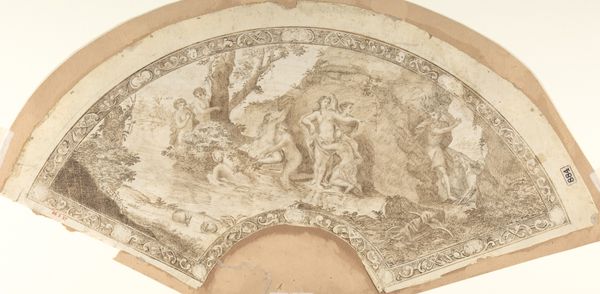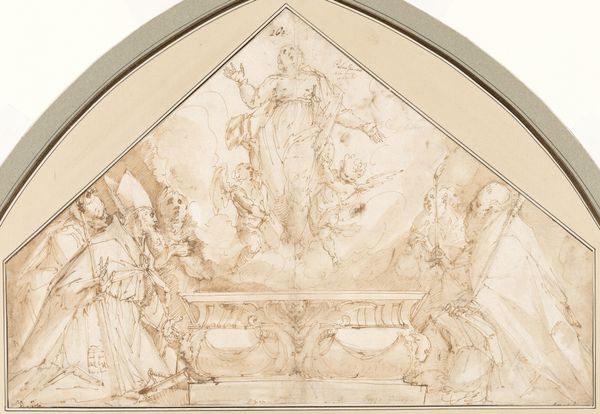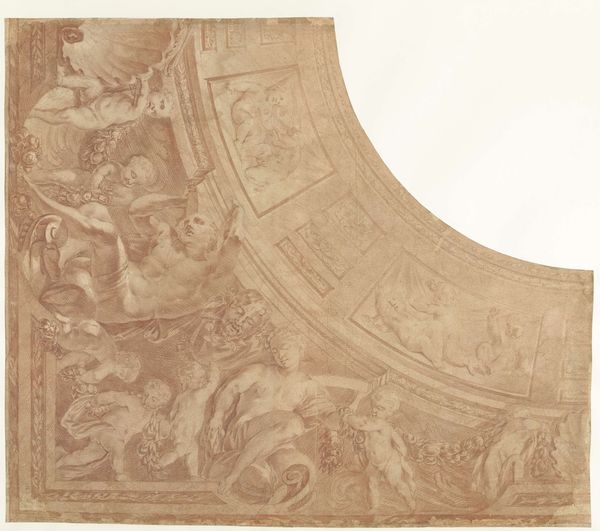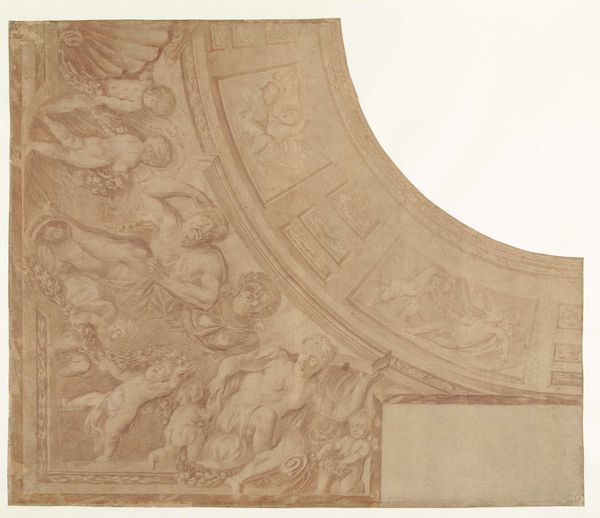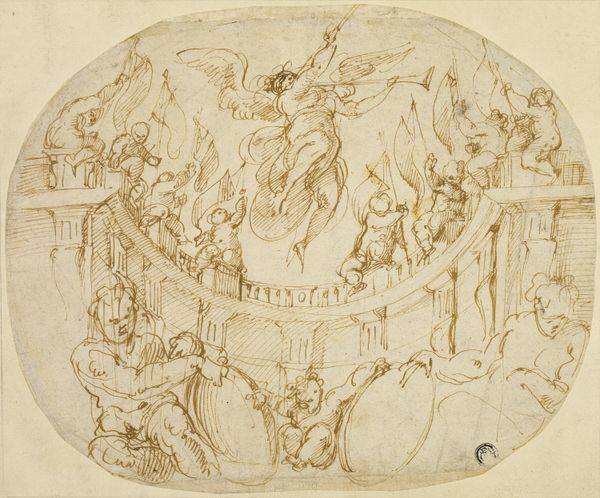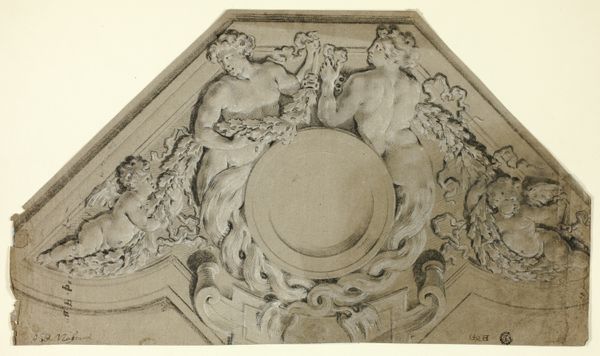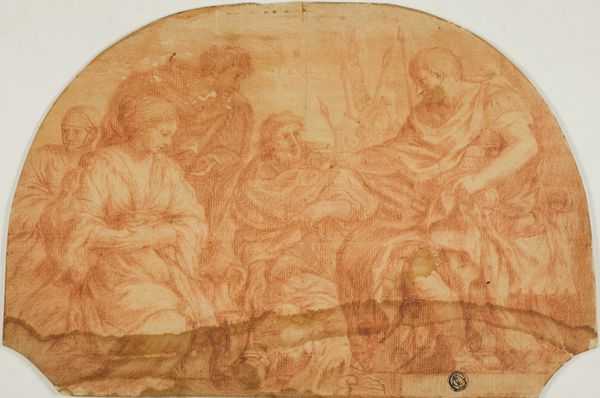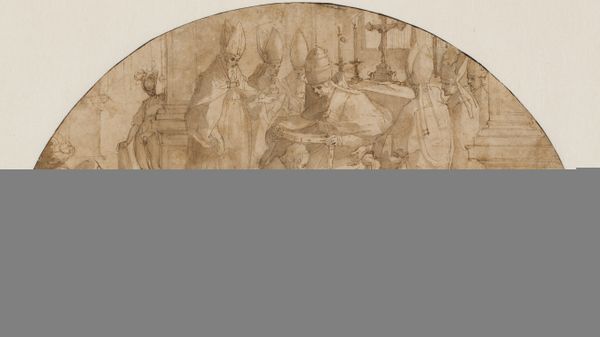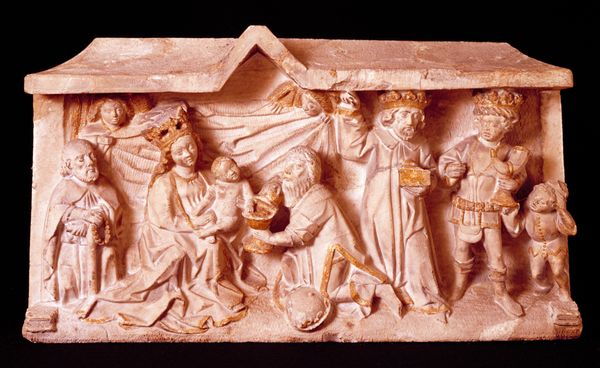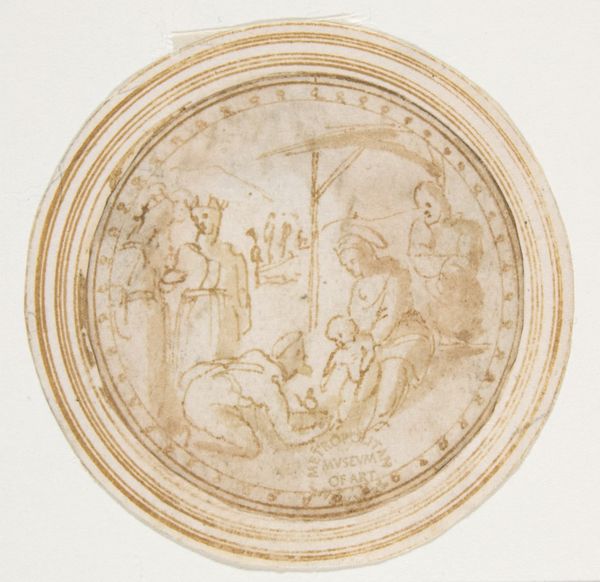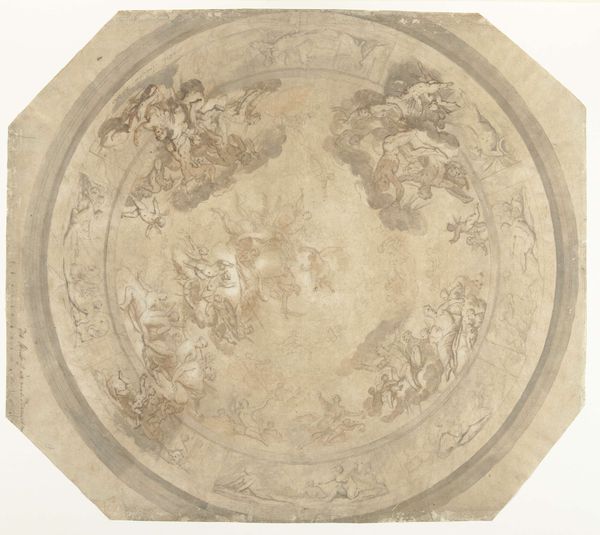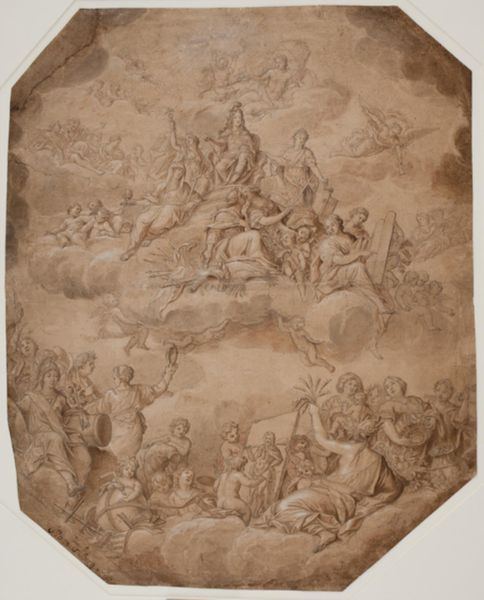
Copyright: Public domain
Editor: Here we have Jacopo Pontormo's "Study for the Lunette with Vertumnus and Pomona," created in 1519, a charcoal drawing currently housed in the Uffizi Gallery. The figures seem to be bursting out of the circular frame, which I find very intriguing! What do you see in this piece? Curator: I see an exquisite study in form and spatial relationships. Notice the swirling composition, how Pontormo uses the figures to create a sense of dynamic movement within the confined space. The arrangement, even in its unfinished state, speaks to the Mannerist style's emphasis on artifice and complexity. Editor: Yes, there is an artificiality in how the figures are posed. They don't look natural at all! How does that relate to Mannerism? Curator: Precisely. Mannerism, emerging from the High Renaissance, deliberately distorted proportions and exaggerated poses. Consider how Pontormo manipulates the human form, elongating limbs and contorting bodies, all to generate a sophisticated, artificial aesthetic. Observe too how the tonal values are developed with great care in the underpainting to create definition. Editor: So, the focus isn’t necessarily on realism or naturalism, but more on showcasing artistic skill? Curator: Indeed. It prioritizes invention and elegance over the pursuit of realistic representation. Furthermore, notice the implied lines and vectors within the composition. These lines contribute to a harmonious and, perhaps unexpectedly, balanced schema, binding the figures together with great clarity and resolution despite the overt distortion of the forms. Editor: I never thought of it as balanced! I was so caught up in the distortions that I missed that. Thanks for showing me how to look beyond just the figures. Curator: It’s through this close visual inspection that we unlock an appreciation for art’s structural mechanics. It is indeed far more than simply just its representational qualities that afford it power.
Comments
No comments
Be the first to comment and join the conversation on the ultimate creative platform.
